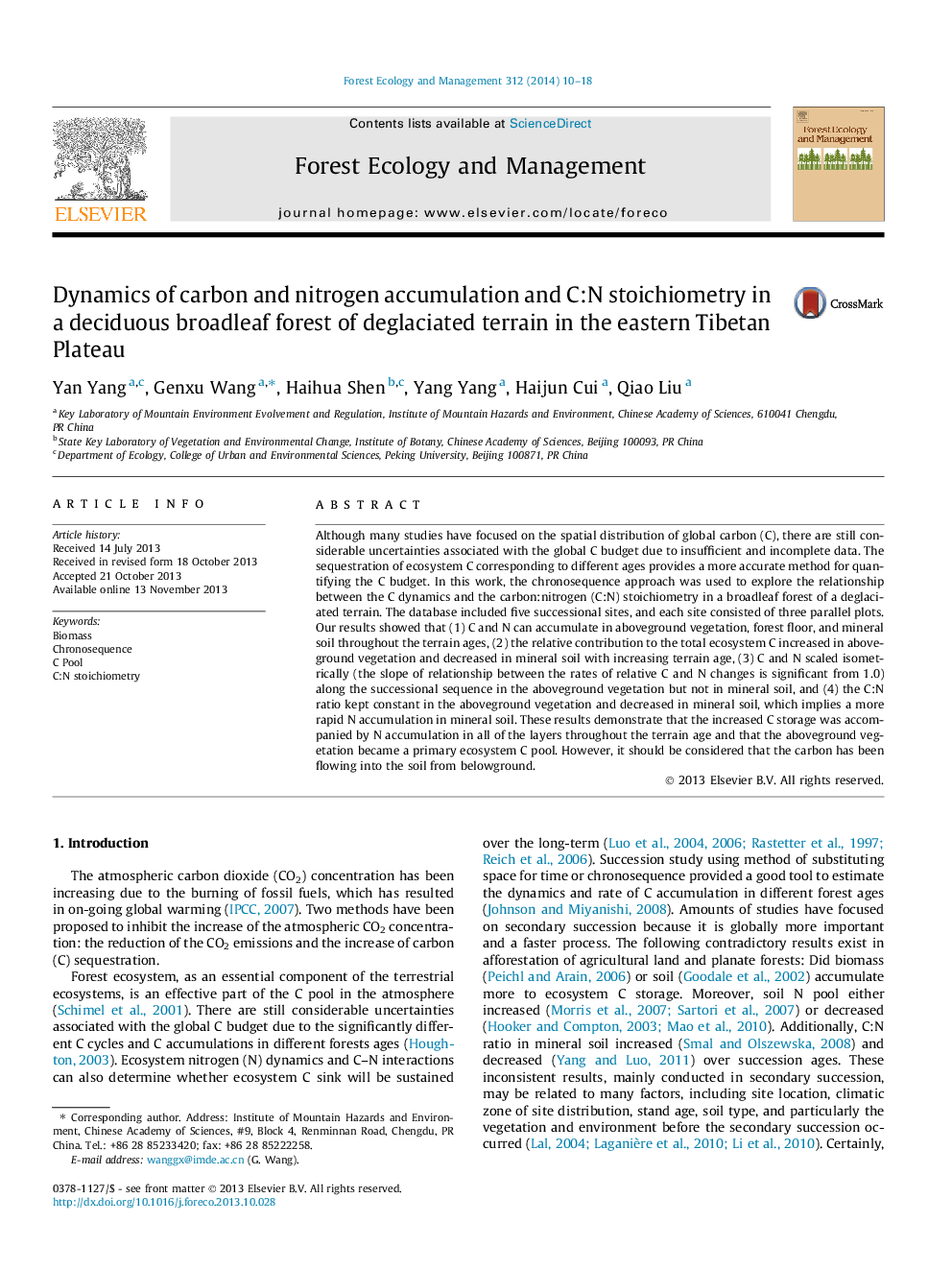| Article ID | Journal | Published Year | Pages | File Type |
|---|---|---|---|---|
| 86768 | Forest Ecology and Management | 2014 | 9 Pages |
•C:N ratio in above-ground vegetation kept constant over stands development.•C and N scaled isometrically in above-ground vegetation but not in mineral soil along the successional sequence.•The above-ground vegetation became a primary ecosystem C pool.
Although many studies have focused on the spatial distribution of global carbon (C), there are still considerable uncertainties associated with the global C budget due to insufficient and incomplete data. The sequestration of ecosystem C corresponding to different ages provides a more accurate method for quantifying the C budget. In this work, the chronosequence approach was used to explore the relationship between the C dynamics and the carbon:nitrogen (C:N) stoichiometry in a broadleaf forest of a deglaciated terrain. The database included five successional sites, and each site consisted of three parallel plots. Our results showed that (1) C and N can accumulate in aboveground vegetation, forest floor, and mineral soil throughout the terrain ages, (2) the relative contribution to the total ecosystem C increased in aboveground vegetation and decreased in mineral soil with increasing terrain age, (3) C and N scaled isometrically (the slope of relationship between the rates of relative C and N changes is significant from 1.0) along the successional sequence in the aboveground vegetation but not in mineral soil, and (4) the C:N ratio kept constant in the aboveground vegetation and decreased in mineral soil, which implies a more rapid N accumulation in mineral soil. These results demonstrate that the increased C storage was accompanied by N accumulation in all of the layers throughout the terrain age and that the aboveground vegetation became a primary ecosystem C pool. However, it should be considered that the carbon has been flowing into the soil from belowground.
